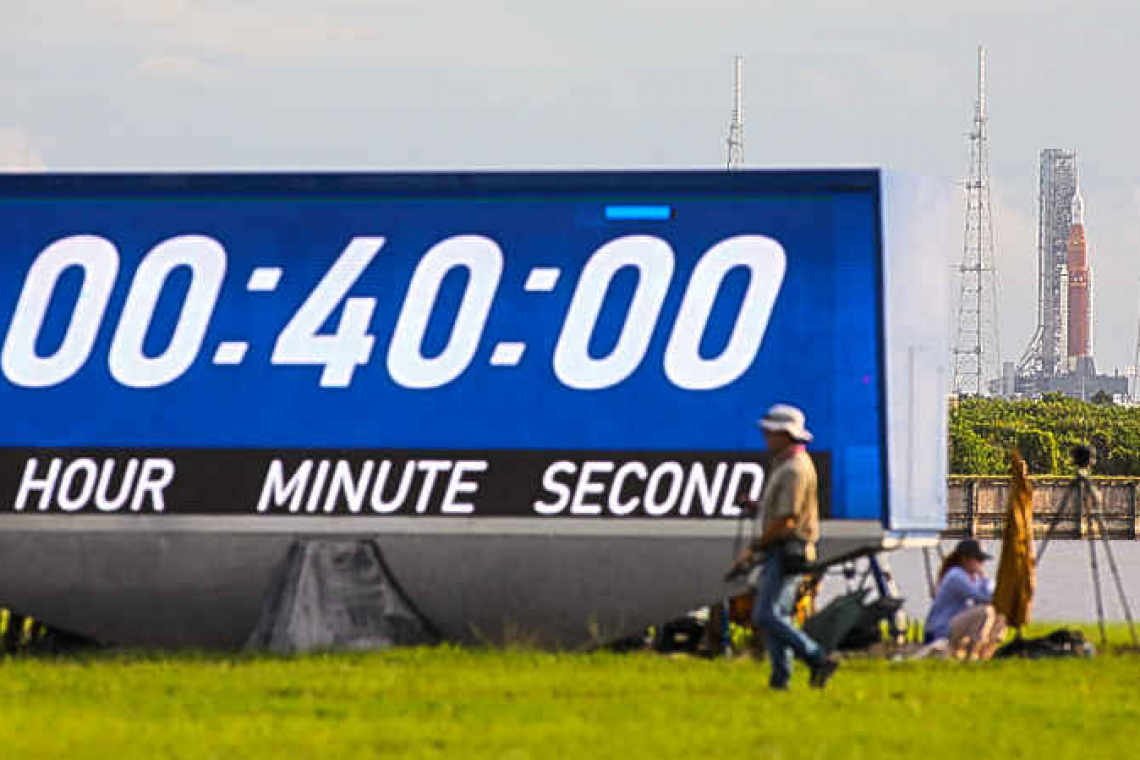CAPE CANAVERAL, Florida--An engine-cooling problem forced NASA on Monday to postpone for at least four days the debut test launch of the colossal new rocketship it plans to use for future astronaut flights back to the moon, more than 50 years after Apollo's last lunar mission.
The space agency declined to set a precise time frame for retrying a launch of the mission, dubbed Artemis I. But a second attempt was still possible as early as Friday, depending on the outcome of further data analysis, senior NASA officials told a news briefing hours after the aborted countdown.
If engineers can resolve the issue on the launch pad in the next 48 to 72 hours, "Friday is definitely in play," Michael Sarafin, NASA's Artemis mission manager told reporters.
The planned journey marks the kickoff of NASA's highly vaunted moon-to-Mars Artemis programme, the successor to the Apollo lunar missions of the 1960s and '70s, and the first voyage of both the Space Launch Vehicle (SLS) rocket and its Orion astronaut capsule. The mission calls for a six-week, uncrewed test flight of the Orion capsule around the moon and back to Earth for a splashdown in the Pacific.
The malfunction on Monday surfaced as the rocket's fuel tanks were being filled with super-cooled liquid oxygen and hydrogen propellants at the Kennedy Space Center in Cape Canaveral, Florida. Launch teams had begun a "conditioning" process to chill the four main SLS engines sufficiently, but one engine failed to cool down as expected, NASA said. The flight was called off two minutes after the targeted launch time.
Late-hour launch postponements are routine in the space business, and Monday's was not in itself an immediate indication of a major setback for NASA or its primary contractors, Boeing Co for SLS and Lockheed Martin Corp for Orion.
"We don’t launch until it’s right," NASA chief Bill Nelson said in a webcast interview after liftoff was scrubbed. "This is a very complicated machine, a very complicated system, and all those things have to work. And you don’t want to light the candle until it’s ready to go."
Still, the delay was a disappointment to thousands of spectators who gathered on the shores around Cape Canaveral, with binoculars in hand. Vice President Kamala Harris had just arrived at the space center, joining a throng of invited guests attending the event.
The voyage is intended to put the 5.75-million-pound vehicle through its paces in a rigorous demonstration flight, pushing its design limits, before NASA deems it reliable enough to carry astronauts in a subsequent flight targeted for 2024. Billed as the most powerful, complex rocket in the world, the SLS represents the biggest new vertical launch system the U.S. space agency has built since the Saturn V rocket flown during Apollo, which grew out of the U.S.-Soviet space race of the Cold War era.
Due to the complexity of the issue that emerged on Monday and constraints on how long a rocket is permitted to remain at a launch tower before blastoff, the spacecraft could end up being rolled back to its vehicle assembly building if trouble-shooting and repairs drag on for too long. Such a move would involve a more extended delay than a few days or a week. But NASA officials said they were not ready to make that call yet.







